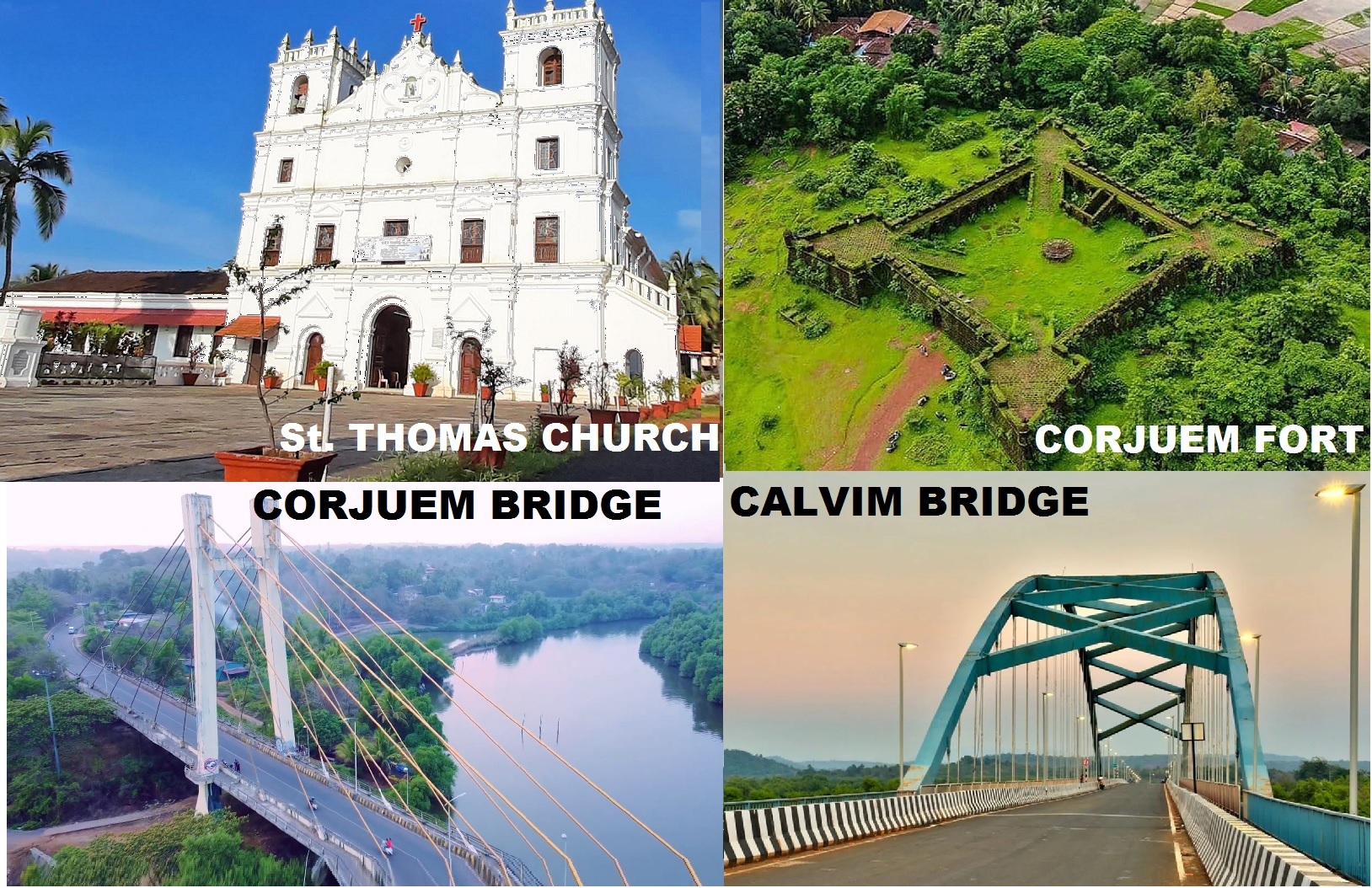
Nestled in North Goa, Aldona is a charming village known for its tranquil setting, and rich cultural heritage. Its name is believed to stem from its agrarian roots—possibly derived from Haldi (turmeric) or Hal (plough). Locally pronounced as Oidone and recorded in old Halekannada documents of the comunidade as Haledone, some interpret Oidone to mean Vhodlem Dhan, or great wealth.
The heritage
The Forte de Nossa Senhora da Assunção or Corjuem Fort is believed to have been originally built by the Desais of Sanquelim and later passed into the hands of the Sawant-Bhonsles of Sawantwadi. It was rebuilt during the tenure of Portuguese Viceroy Caetano de Mello e Castro in 1705. In the early 1800s, the fort, strategically defending Corjuem Island, housed a military school with a battery of four guns and featured a small chapel dedicated to St Anthony of Padua.
In addition to Corjuem Fort, two smaller fortifications once stood nearby—one at Postar in Quitula and another on Ponolem Island, known as Fortim Real. These acted as outposts, signaling the approach of enemy forces and relaying flag messages to the forts at Corjuem, Tivim, and Sortir on Chorao Island. Although no traces of the fort at Postar remain, the site retains its name. In contrast, remnants of Fortim Real at Ponolem were visible until about two decades ago. At Aldona Tinto, the historical site Terçena was named Terço as one-third of the Portuguese garrison stationed there, which was wiped out by the Bhonsles.
The Franciscans founded Bardez’s seventh parish and built the St Thomas the Apostle Church or São Tomé Igreja em Aldona, beginning their ministry in Coimavaddo with the erection of the church in 1569. A larger, centrally located church was constructed in 1596 at Quitula. The existing structure, built before 1610, replaced the earlier mud edifice. The parochial residence and sacristy were added by 1898, and the left-side tower was completed in 1927. The feast of the patron is celebrated on the 3rd Sunday after Easter. In 1996, the Church's Fourth Centenary was commemorated. The principal village deity is Bhagwati Aldonacarin, whose temple is located at Khandola in Marcel, Ponda.
The parish has three chapels with chaplains—St Rita of Cassia (Carona), Mother of God (Corjuem), and Our Lady of Piety (Quitla)—and two without chaplains—the Holy Cross (Panarim) and Mother of God (Ranoi). Religious orders based here include the Missionaries of St Francis de Sales at Fransalian Home, the Pilar Fathers at Carona, the Apostolic Carmel at Rosa Mystica Convent, the Handmaids of Christ at Sacred Heart Asylum, the Daughters of Mary Help of Christians(FMA) at Auxilium Convent, and the Daughters of the Heart of Mary at St Bridget’s Institute.
Aldona is famous for its four bridges—three connecting to Corjuem and one to Calvim. The Aldona-Corjuem cable-stayed bridge is the second of its kind in India.
Education
Aldona hosts several educational institutions. Key schools include St Thomas Boys High School (est.1923), St Thomas Higher Secondary School (est.1992), St Thomas Girls High School, St Thomas Boys Primary School, Mae De Deus High School (Corjuem), and Paradise School (Acabana). Higher education and vocational training are offered at Sharada Institute of Science, Technology and Management and Dnyan Prakash Mandal Higher Secondary School (Assonora).
Notable personalities
Aldona has produced several distinguished personalities in diverse fields. In the world of music, the village is home to the legendary singer-tiatrist Alfred Rose and the celebrated jazz trumpeter Antonio Xavier Vaz, popularly known as Chic Chocolate, both of whom left an indelible mark on music. In education, Edward Soares, the founder and principal of St Thomas Boys High School, played a pivotal role in shaping young minds.
The village has also given the Church several eminent leaders, including late Fr Ferdinando Fonseca, Auxiliary Bishop of Bombay; Cardinal Joseph Couto of Karachi; Archbishop of Delhi, Anil Couto; and Bishop of Islamabad-Rawalpindi, Anthony Lobo. Cardinal Filipe Neri Ferrão, the present Archbishop of Goa and Daman, also hails from Aldona. In the fields of medicine and academia, Dr Luzito de Souza, a noted cancer specialist, and C D Pinto, a respected professor and Knight of the Order of St Gregory, brought great pride to Aldona. It is also home to Padma Shri Maria Aurora Couto, an acclaimed writer and cultural historian whose works continue to celebrate Goa’s identity.
Cultivation and trade
The Portuguese introduced chilies to Goa, and since then, Aldona has become renowned for its distinctive varieties. Aldona chilies, grown in the village’s fertile soils, are sun-dried to perfection, boasting a vibrant red color and smoky aroma, making them essential in Goan curries and masalas. Aldona is famous for three varieties: Motio, Mosurio/butao, and Kasmirio. Among them, Motio—meaning fat—is prized for dishes like vindaloo and sorpotel. These dark, nearly black chilies, about three inches long, are mildly spicy but lend rich colour and texture, often darker than Kashmiri chilies, enhancing both flavor and appearance.
Aldona’s fertile lands have long supplied onions and onion saplings to surrounding villages. Traditionally, Goan homes hung bunches of small pinkish-purple onions from kitchen beams while preparing purument for the monsoon. Historically, Aldona prospered as a trading port, where patmarim (sailboats) navigating the Mandovi River docked first at Aldona, then Moira, and finally at the busy market town of Mapusa, transporting rice, chilies, onions, and other produce, which brought significant income to the Oidonkars.
Aldona’s identity is layered, encompassing its ancient comunidade, which dates back nearly 2,000 years; the parish (freguesia), established after 1542; and the panchayat jurisdiction, formed in Goa after 1961.